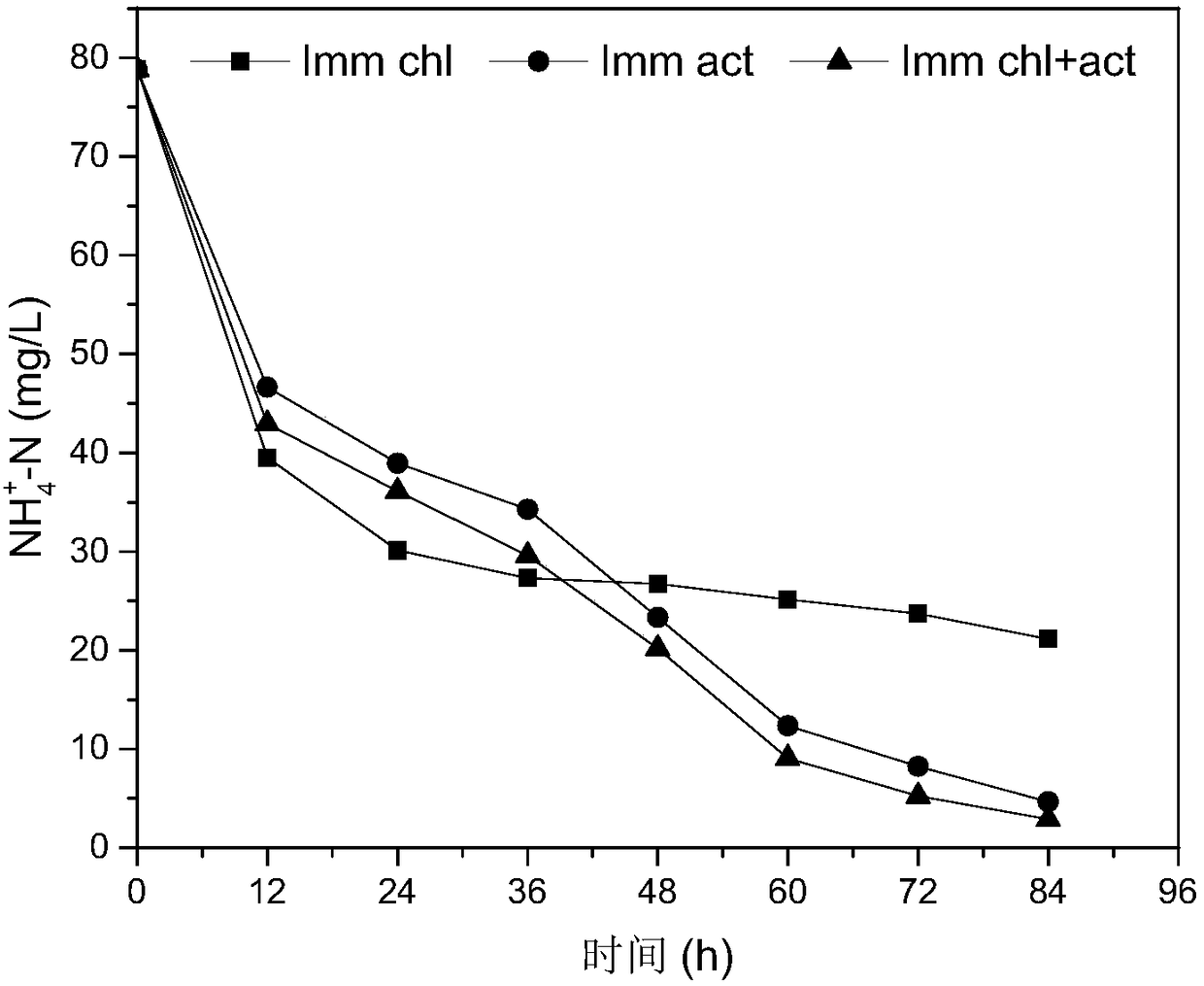Method for removing nitrogen and phosphorus in breeding wastewater through immobilized algal-bacteria
A technology of aquaculture wastewater and immobilized pellets, which is applied in the field of water purification and can solve the problems that the treatment effect needs to be enhanced.
- Summary
- Abstract
- Description
- Claims
- Application Information
AI Technical Summary
Problems solved by technology
Method used
Image
Examples
Embodiment 1
[0051] Example 1: Denitrification and phosphorus removal of high ammonia nitrogen aquaculture wastewater by individual fixation of algae and bacteria and mixed fixation
[0052] Centrifuge the chlorella liquid cultivated to the logarithmic phase and the activated sludge taken from the aeration tank of the sewage plant at 4000r / min for 5 minutes, wash with tap water three times and then centrifuge, suspend the culture wastewater to make a concentrated solution, and take appropriate Volume (inoculum size is dry weight 0.4g / L) of chlorella concentrate and activated sludge concentrate are fixed with the method in 2, and the dosage of immobilized pellets is 400 / 100mL, respectively: (1 ) immobilized chlorella (Imm chl); (2) immobilized activated sludge (Imm act); (3) immobilized chlorella and activated sludge (Imm chl+act). Erlenmeyer flasks were placed in a constant temperature light shaker. The culture condition is 25°C, the light is 6000lux, and the light-dark ratio is 16h:8h. ...
Embodiment 2
[0056] Example 2: Nitrogen and phosphorus removal of high ammonia nitrogen aquaculture wastewater by different algae bacteria immobilization methods
[0057] Centrifuge the chlorella liquid cultivated to the logarithmic phase and the activated sludge taken from the aeration tank of the sewage plant at 4000r / min for 5 minutes, wash with tap water three times and then centrifuge, suspend the culture wastewater to make a concentrated solution, and take appropriate Volume (inoculum size is dry weight 0.4g / L) of chlorella concentrate and activated sludge concentrate are fixed with the method in 2, and the dosage of immobilized pellets is 400 / 100mL, respectively: (1 ) free chlorella and immobilized activated sludge (Sus chl+imm act); (2) free activated sludge and immobilized chlorella (Sus act+imm chl); (3) immobilized chlorella and immobilized Activated sludge (Imm chl+imm act); (4) Co-immobilization of algae and bacteria (Co-imm). Erlenmeyer flasks were placed in a constant tempe...
PUM
 Login to View More
Login to View More Abstract
Description
Claims
Application Information
 Login to View More
Login to View More - R&D
- Intellectual Property
- Life Sciences
- Materials
- Tech Scout
- Unparalleled Data Quality
- Higher Quality Content
- 60% Fewer Hallucinations
Browse by: Latest US Patents, China's latest patents, Technical Efficacy Thesaurus, Application Domain, Technology Topic, Popular Technical Reports.
© 2025 PatSnap. All rights reserved.Legal|Privacy policy|Modern Slavery Act Transparency Statement|Sitemap|About US| Contact US: help@patsnap.com



